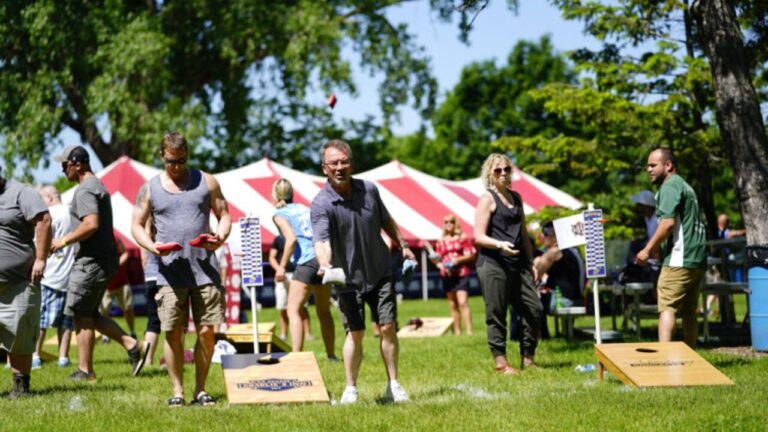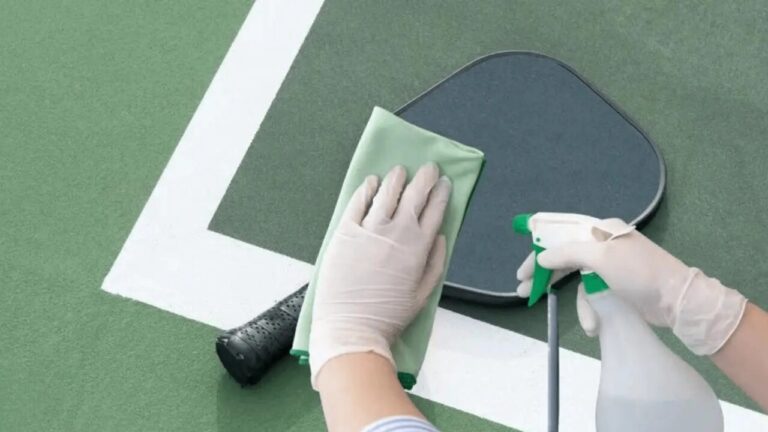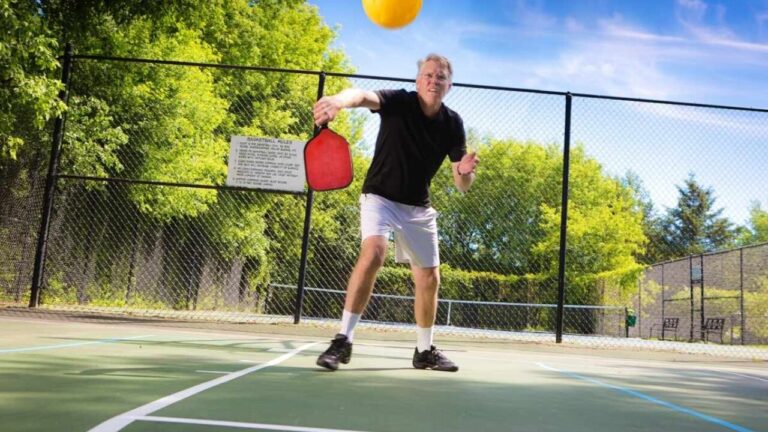Learn the official dimensions of a pickleball court, including its length, width, and specific measurements for singles and doubles play. Our detailed guide will help you set up your court correctly.

When it comes to playing pickleball, one of the most important aspects to get right is the pickleball court size. Whether you’re setting up a court in your backyard or playing in a professional league, knowing the correct dimensions is essential to ensuring a fair and enjoyable game.
In this article, we’ll break down the official pickleball court size, including the measurements for both singles and doubles play, the different sections of the court, and why these dimensions matter for the game.
Official Pickleball Court Dimensions
The pickleball court size is clearly defined by the USA Pickleball Association (USAPA). Whether you are playing singles or doubles, the court dimensions are slightly different, and understanding these details ensures that your court is set up correctly.
- Overall Length: A pickleball court is 44 feet (13.4 meters) long.
- Overall Width: The overall width of the court is 20 feet (6.1 meters) for both singles and doubles.
Differences Between Singles and Doubles Court Dimensions
While the pickleball court dimensions are the same in terms of length for both singles and doubles, there are differences in the width when playing singles compared to doubles:
- Doubles Court Width: In doubles play, the court is 20 feet (6.1 meters) wide. This width is shared by both teams, and the court’s full width is used for serving and returning the ball.
- Singles Court Width: For singles play, the pickleball court is slightly narrower. The width of the court for singles is 17 feet (5.18 meters). The narrower width makes the game faster and requires more precision from the players.
The length of the court remains the same in both formats, measuring 44 feet (13.4 meters).
The Court Layout: Key Areas and Sections
Now that we know the basic dimensions, let’s break down the specific sections of the pickleball court. Understanding each area is important for both gameplay and court setup.
- Non-Volley Zone (Kitchen):
- The non-volley zone, commonly referred to as the kitchen, is a key part of the pickleball court. It extends 7 feet (2.13 meters) from the net on both sides.
- This area is important because players are not allowed to hit the ball while standing in the kitchen unless the ball has bounced first. The kitchen prevents players from standing too close to the net and smashing the ball without letting it bounce.
- Service Areas:
- On each side of the court, the service areas are divided into left and right halves. When serving, players must serve from behind the baseline and within their designated side.
- The service box is located on the right side when the server’s score is even, and on the left side when the server’s score is odd.
- Baseline:
- The baseline is the back boundary line of the pickleball court, located at the ends of the court. It’s where players stand to serve the ball and where they must stay behind during the serve.
- Sidelines:
- The sidelines are the two boundary lines that run along the length of the court. These lines help define the width of the court, which is 20 feet (6.1 meters) for doubles play and 17 feet (5.18 meters) for singles play.
- Centerline:
- The centerline runs from the baseline to the non-volley zone, splitting the court into two equal halves. It is used to divide the service boxes into left and right sides for each player or team.
- The Net:
- The pickleball net spans the entire width of the court and is 36 inches (91.4 cm) high at the sides and 34 inches (86.4 cm) at the centre.
Why Court Size Matters
The pickleball court dimensions have been designed to create a balanced playing environment. Here’s why getting the size right matters:
- Fairness: The official court size ensures that every player has the same space to move and react. It guarantees fairness in the game, whether you’re playing singles or doubles.
- Gameplay Speed: The court size also affects the speed of the game. A larger court allows for longer rallies, while a smaller court can speed up the game and require faster reflexes, especially in singles play.
- Strategy: With the correct court size, players can use a variety of tactics, from serving strategies to dinking and volleys. The dimensions give enough room for the strategic placement of the ball and using angles effectively.
How to Set Up a Pickleball Court
Setting up a pickleball court is straightforward if you follow the correct dimensions. Here’s how to do it:
- Prepare the Court Area: Start by marking a flat area that’s at least 44 feet (13.4 meters) long and 20 feet (6.1 meters) wide for a doubles court. If you are only playing singles, the width can be reduced to 17 feet (5.18 meters).
- Set the Net: The net should be placed at the centre of the court, spanning the full width. Ensure that the net height is correct, with 34 inches (86.4 cm) at the centre and 36 inches (91.4 cm) at the edges.
- Mark the Lines: Use tape or paint to mark the lines of the court:
- Sidelines: Mark two lines along the length of the court, 20 feet (6.1 meters) apart for doubles play.
- Baseline: Mark two lines at the ends of the court, 44 feet (13.4 meters) apart.
- Centerline: Draw a line down the centre to divide the court into two halves.
- Non-Volley Zone: Mark a 7-foot (2.13 meters) area from the net on both sides to define the kitchen.
- Test the Dimensions: After setting up the court, double-check that the pickleball court dimensions are correct to ensure a proper game.
Conclusion: The Importance of Correct Pickleball Court Size
The pickleball court size is crucial to ensuring that the game is played fairly and efficiently. Whether you’re setting up a court at home or participating in a competition, it’s essential to follow the correct measurements. The official dimensions of 44 feet (13.4 meters) in length and 20 feet (6.1 meters) in width for doubles (and 17 feet (5.18 meters) for singles) provide the perfect space for both strategic play and fast-paced action.
Having a correctly sized court helps with fairness, and game flow, and encourages players to use a variety of tactics. By following the official measurements, you ensure that every pickleball match is enjoyable, whether it’s casual play or a competitive tournament.
The official pickleball court size is 44 feet (13.4 meters) long and 20 feet (6.1 meters) wide for doubles. For singles play, the court width is 17 feet (5.18 meters).
foot (2.13 meters) area on either side of the net where players cannot hit the ball unless it bounces first.
For singles play, the pickleball court is 17 feet (5.18 meters) wide, which is narrower than the 20 feet (6.1 meters) used for doubles.
A pickleball court is 44 feet (13.4 meters) long, regardless of whether you are playing singles or doubles.
The non-volley zone (or kitchen) is a 7-foot (2.13 meters) area on either side of the net where players cannot hit the ball unless it bounces first.
While the official pickleball court dimensions are 44 feet by 20 feet (or 17 feet for singles), you can play in a smaller space, but the game will likely play faster and may require adjustments to strategy and rules.










